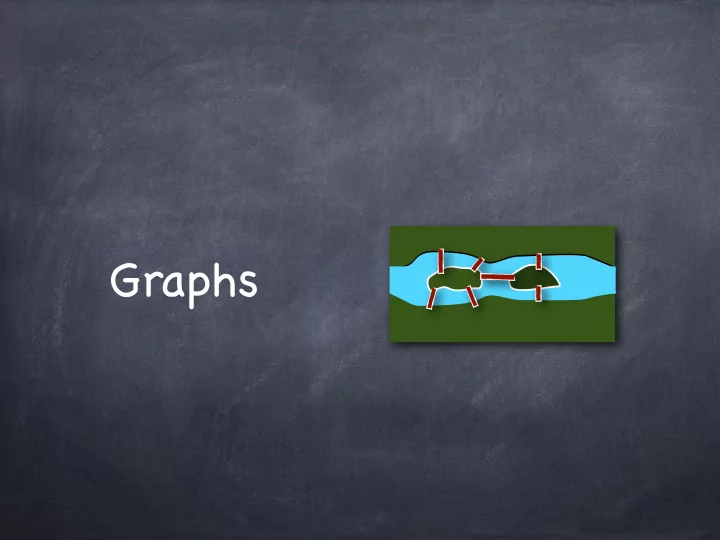

Graphs
Graphs What is “connected” to what Many things we deal with in computer science are graphs Networks: humans, communication, computation, transportation, knowledge Courtesy:gigaflop.demon.co.uk Courtesy: cablemap.info Courtesy: Microsoft Academic Search Courtesy: Digital Humanities Specialist @ Stanford Courtesy: New Scientist
Graphs Many Applications in action Often want to design graphs with “good properties” Connecting processors in a super-computer Data structures (e.g., “trees”) to keep data in an easy-to- search/manipulate fashion Typically want graphs with few connections (i.e., edges), but good “connectivity” -- i.e., (possibly many) short paths between any two nodes Very efficient algorithms known for relevant graph problems e.g., breadth/depth-first search, shortest path algorithm... But many other graph problems are known to be “NP-hard” e.g., Traveling Salesperson Problem (TSP): visit all cities, by traveling the least distance
Simple Graphs A simple graph G = (V ,E), where E ⊆ { {a,b} | a,b ∈ V , a ≠ b } V is the set of nodes, E the set of edges V non-empty and finite (for us) Note: the “drawing” is not part of the graph, only the connectivity is
Simple Graphs Recall graphs for relations: directed graphs with self-loops Each element in the domain forms a node Each ordered pair (a,b) in the relation forms an edge Edges of the form (a,a) are “self-loops” A simple graph is essentially a symmetric, irreflexive relation Symmetric: An undirected edge {a,b} can be modelled as two directed edges (a,b) and (b,a) Irreflexive: No self-loops In a “non-simple” graph, can allow more than one edge between any pair (multigraphs), or more generally, allow weights on edges (weighted graphs)
Examples Complete graph K n : n nodes, with all possible edges between them E = { {a,b} | a,b ∈ V , a ≠ b } # edges, |E| = n(n-1)/2 Cycle C n : V = { v 1 ,...,v n }, E = { {v i ,v j } | j=i+1 or (i=1 and j=n) } Bipartite graph : V = V 1 ∪ V 2 , where V 1 ∩ V 2 = Ø (i.e., a partition), and no edge between two nodes in the same “part”: E ⊆ { {a,b} | a ∈ V 1 , b ∈ V 2 } e.g., C n where n is even Complete bipartite graph K n1,n2 : Bipartite graph, with |V 1 |=n 1 , |V 2 |=n 2 and E = { {a,b} | a ∈ V 1 , b ∈ V 2 } # edges, |E| = n 1 ⋅ n 2 Later: Hypercube, Trees
Graph Isomorphism G 1 = (V 1 ,E 1 ) and G 2 = (V 2 ,E 2 ) are isomorphic if there is a bijection f:V 1 → V 2 such that {u,v} ∈ E 1 iff {f(u),f(v)} ∈ E 2 1 c b 2 4 C 4 a d w 1 3 a x 2 b w y y 3 K 2,2 c z 4 d x z Computational problem: check if two graphs (given as adjacency matrices) are isomorphic Can rule out if certain “invariants” are not preserved (e.g. |V|,|E|) In general, no “efficient” algorithm known, when graph is large Some believe no efficient algorithm exists!
Subgraphs A subgraph of G = (V ,E) is a graph G’ = (V’,E’) such that V’ ⊆ V and E’ ⊆ E To get a subgraph: Remove zero or more vertices along with the edges incident on them, and further remove zero or more edges Induced subgraph: omit the last step
Recommend
More recommend